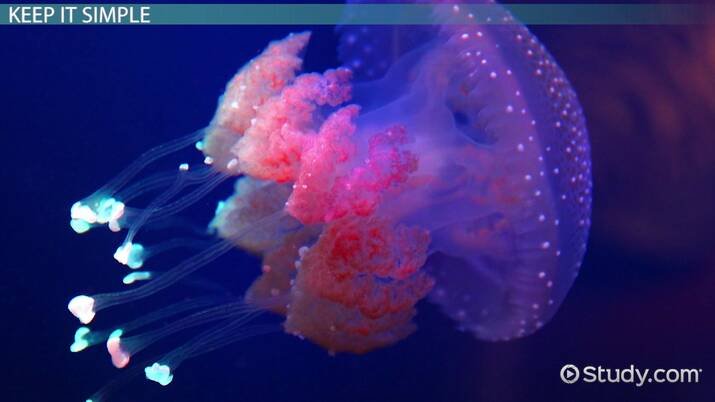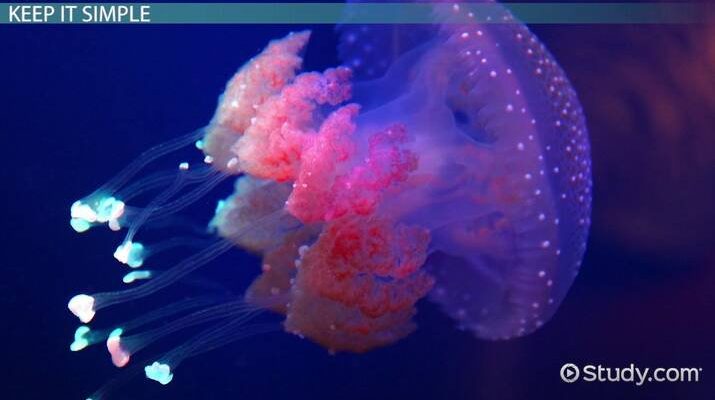
The box jellyfish, scientifically known as *Chironex fleckeri*, can be found in warm coastal waters, particularly around Northern Australia and the Indo-Pacific region. These jellyfish have made the ocean their home for millions of years, and they have some remarkable features that ensure they thrive in their environment. So, just like how we might pack a bag for a trip with all the essentials, the box jellyfish is equipped with its own set of tools to navigate the deep blue sea. Let’s dive into the adaptations that make this jellyfish a true underwater marvel.
1. Unique Body Shape and Structure
One of the most striking features of the box jellyfish is its distinct box-like shape. Unlike the typical bell-shaped jellyfish, the box jellyfish has a cube-like structure that allows it to move efficiently through the water. This shape isn’t just for looks—it plays a crucial role in how it swims.
The box jellyfish has four sides, and each side is equipped with a set of light-sensing organs known as statocysts. These organs help the jellyfish navigate its surroundings by sensing light and gravity. Imagine being able to feel the direction of sunlight underwater; it’s like having your own internal GPS system! This ability not only aids in finding food but also helps the jellyfish avoid potential dangers in its environment.
Another key feature of this unique shape is its tentacles, which trail from each corner of its body. These tentacles not only extend its reach for hunting but also increase its chances of catching prey. As it swims, the jellyfish can whip its tentacles in and out, capturing small fish and plankton. This adaptability in body structure is vital for its survival, allowing it to be both predator and prey in the vast ocean.
2. Powerful Venom
Let’s talk about one of the box jellyfish’s most notorious adaptations: its powerful venom. The tentacles of the box jellyfish are lined with specialized cells called nematocysts, which are like tiny harpoons loaded with venom. When the jellyfish encounters a potential meal or feels threatened, it can fire these nematocysts, injecting venom into its target.
This venom is not just for show—it’s incredibly potent, capable of paralyzing small fish and even causing serious harm to humans. You might be wondering why it needs such fearsome venom. Well, in the competitive underwater world, having a means to hunt effectively while also protecting itself is essential. Think of it as carrying a self-defense mechanism; the box jellyfish can ward off predators while also securing its next meal.
Interestingly, box jellyfish use their venom strategically. They don’t just aimlessly sting everything that comes near; instead, they target specific prey that will be easier to capture. This intelligent use of their adaptations showcases their survival instincts and highlights the complex nature of life under the sea.
3. Exceptional Swimming Skills
Swimming is a big part of life for the box jellyfish. It’s not just about floating around aimlessly—these creatures are surprisingly efficient swimmers. Their unique body shape allows them to maneuver through the water with ease, making them agile predators.
The box jellyfish uses a form of propulsion that’s different from many other aquatic animals. By contracting and relaxing its bell, it can push water behind it, allowing for quick bursts of speed. This ability is crucial when chasing after prey or escaping from larger predators. You might compare it to a car that can quickly accelerate to escape danger, making the box jellyfish a formidable force in the ocean.
In addition to speed, box jellyfish can also change direction rapidly. This agility helps them dart in and out of coral reefs or other underwater structures, making it easier to hunt without being detected. Their swimming skills are a prime example of how adaptations can help a species thrive in its environment.
4. Camouflage and Transparency
Another fascinating adaptation of the box jellyfish is its remarkable transparency. Many creatures in the ocean rely on camouflage to hide from predators and prey alike, and the box jellyfish does just that—by blending into its surroundings. Its clear, jelly-like body makes it harder to spot against the backdrop of the ocean.
This transparency gives the jellyfish a significant advantage. When lurking among the waves, it can approach its prey without being seen. Have you ever tried hiding in plain sight? That’s the box jellyfish’s strategy, making it a master of stealth in the underwater realm.
Additionally, its ability to change colors slightly as it moves through different light conditions adds an extra layer of camouflage. This feature can be crucial for evading larger predators that might see it as a snack. Being almost invisible in the vast ocean is a lifesaving adaptation for this unique creature.
5. Reproductive Strategies
The way box jellyfish reproduce is yet another adaptation that ensures their survival. They have a fascinating life cycle, starting as tiny larvae and eventually growing into the mature jellyfish we recognize. Box jellyfish reproduce through sexual reproduction, where they release sperm and eggs into the water, allowing for fertilization to occur.
Once fertilized, the eggs develop into larvae that settle on the ocean floor. These larvae transform into small polyps, which can then bud off and eventually develop into adult jellyfish. This method of reproduction is similar to some plants, where a single organism can produce many offspring, increasing the chances of survival for the species.
What’s interesting is that under favorable conditions, polyps can reproduce asexually, producing clones of themselves. This means that in a thriving environment, one box jellyfish can lead to a population explosion, helping them thrive where they live. It’s like planting a seed in fertile soil—the right conditions can lead to a flourishing community of box jellyfish!
6. Sensory Organs for Navigation
Have you ever thought about how creatures in the ocean keep track of where they are? For the box jellyfish, its sensory organs are key to navigating through the water. As mentioned earlier, the statocysts are vital for sensing light and gravity, but there’s more to the story.
Box jellyfish also have simple eyes located around their bell that can detect light changes, helping them find their way. This ability not only assists them in hunting but can also guide them toward areas with food or away from danger. It’s like having multiple eyes in different positions; they can see a lot more of their world than you might think!
These sensory adaptations allow the box jellyfish to be more aware of their surroundings. With the constantly shifting environment of the ocean, having a reliable sense of direction is crucial for survival. It’s fascinating to think about how such delicate creatures can have such advanced sensory capabilities!
7. The Role of Box Jellyfish in the Ecosystem
Lastly, let’s discuss the box jellyfish’s place within the marine ecosystem. Like any other species, box jellyfish play an important role in maintaining balance in their environment. As predators, they keep populations of smaller fish and plankton in check, which is crucial for the health of the ocean.
On the flip side, box jellyfish themselves are also prey for various marine animals, such as sea turtles. This interdependence is a reminder that every creature, no matter how small or seemingly insignificant, contributes to the tapestry of life in the sea.
Additionally, box jellyfish can sometimes bloom in large numbers. While this might seem daunting, these blooms can be a natural part of the ecosystem’s cycling. They can provide food sources for other organisms at certain times, supporting the marine food web. Just like wildflowers in a meadow, their presence can signal a healthy, thriving ocean environment.
In conclusion, the adaptations that help the box jellyfish thrive underwater are intricate and fascinating. From their unique body shape to their potent venom and impressive swimming skills, everything about them is designed for survival in the ocean. Understanding these adaptations not only helps us appreciate these remarkable creatures but also highlights the delicate balance of life in our oceans. Let’s celebrate the box jellyfish and its incredible journey through the underwater world!

